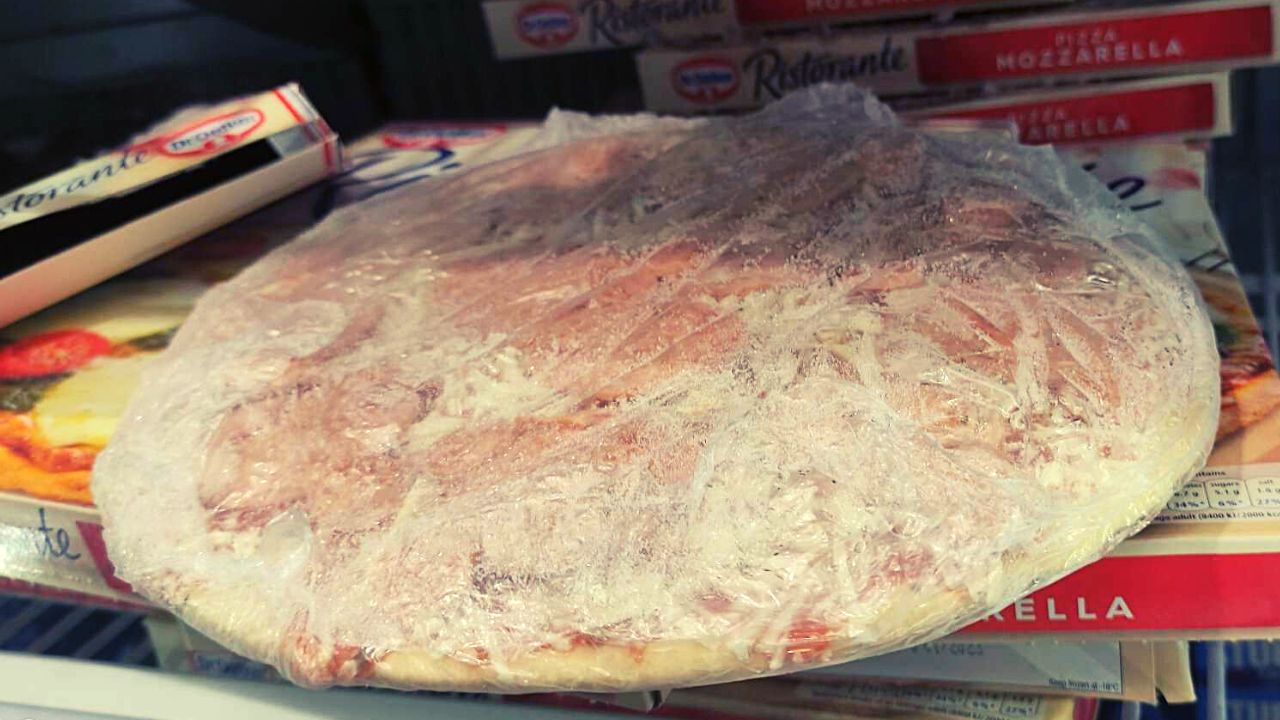Pizza consists of many different ingredients like dough, cheese, tomato sauce, ham, chicken, mushrooms, olives, pepperoni, and pineapples (just joking) and you name it. It seems like a storage nightmare, yet supermarkets and manufacturers are doing quite a good job extending its shelf-life by freezing it.
But even with proper freezing, the taste and texture start to deteriorate to the point when pizza becomes inedible. That can happen even faster when it is not appropriately wrapped, stored at the wrong temperature, or gets fully or partially defrosted during the transport or you left your fridge-freezer door accidentally open all night.
While ‘Best Before’ dates and food storage labels are helpful, you can not entirely rely on them either.
So let’s see how to tell if frozen pizza is bad and what are some of the signs of spoilage that you should not ignore.
4 Signs That Your Frozen Pizza Has Gone Bad
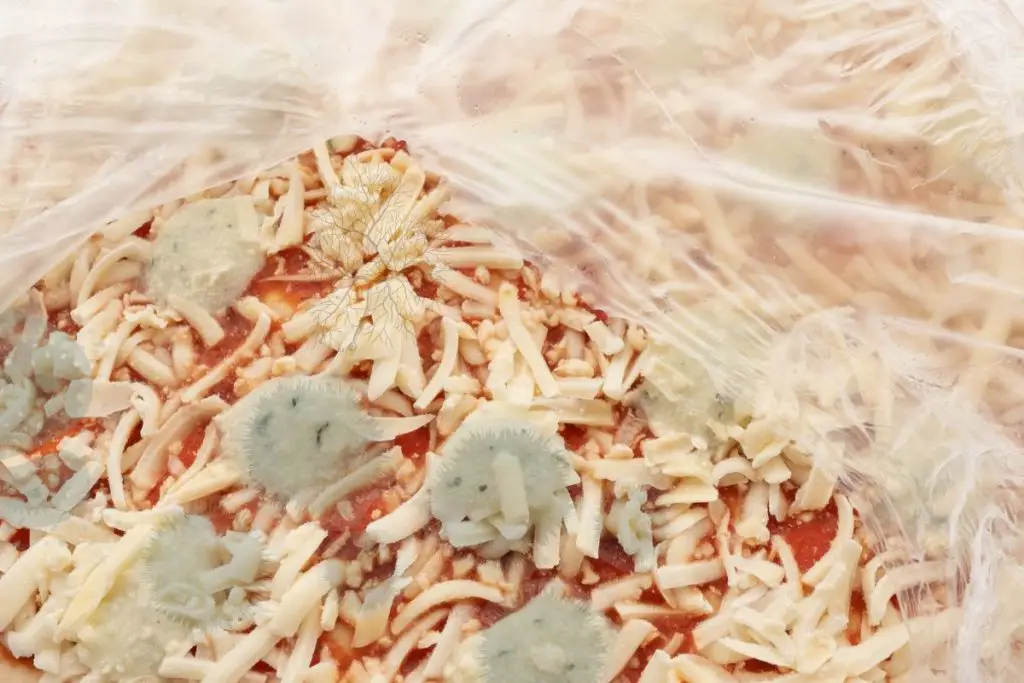
The most tell-tale signs of a spoiled frozen pizza are changes in appearance, consistency, smell, changes in texture, freezer burn, or ripped packaging. It is essential to trust and rely on your senses, as any of these signs will indicate that something is off.
1. Unpleasant Smell
It is more challenging to recognize scents in frozen foods, so it’s best if you judge the pizza’s smell after letting it thaw for a bit, right before you plan to cook it.
Keep in mind that frozen pizza should have a fresh and slightly yeast-like scent. If you smell anything that does not seem appetizing or comes across as off, it’s best to discard it.
2. Slimy Texture
Although this hardly happens with frozen pizza dough, some of the toppings on your frozen pizza could change the texture and turn slimy or slippery to the touch. This is common for cheese, olives, or ham, and it’s a clear sign of spoiled food, so make sure to throw it away.
3. Mold
It may seem impossible, but even frozen pizza can grow mold, particularly if it has been stored in fluctuating temperatures or has been repeatedly defrosted.
Keep in mind that low temperatures do not kill bacteria or spores; they simply prevent them from spreading and multiplying. Subsequently, any significant temperature change can make them grow again.
If you see the tell-tale signs of mold or unusual discoloring do not attempt to cut it off and eat the rest—odds are the spores have spread throughout the entire pizza, even if you can’t see them.
4. Suspicious Discoloration
Keep an eye out for the way your pizza looks. If the color seems dull, gray, or off in any way, then trust your senses and avoid giving it a bite, as it could be a clear sign of spoilage.
However, remember that it could also be freezer burns, which is a different type of issue altogether.
Is Freezer-Burned Pizza Safe To Eat?

Technically, freezer burns do not mean the food is spoiled or not safe to eat. However, it may be wise to avoid eating it nonetheless.
Freezer burn happens when frozen food is not stored correctly. Air reaches the food, which causes dehydration and oxidation, and, in turn, the surface can grow ice crystals. This moisture loss can make food look discolored and tough, which can significantly impact taste and texture [1].
A frozen pizza with freezer burn is safe to eat if you want, but keep in mind that it will probably have an off taste and a strange texture, making it a less-than-ideal experience. Considering the wide variety of ingredients on your pie, in most cases, you’d be better off throwing it away.
Read Also: How To Cook Freezer Burned Meat? (Without Ever Being Noticed).
Can You Eat Frozen Pizza Past Its Expiration Date?
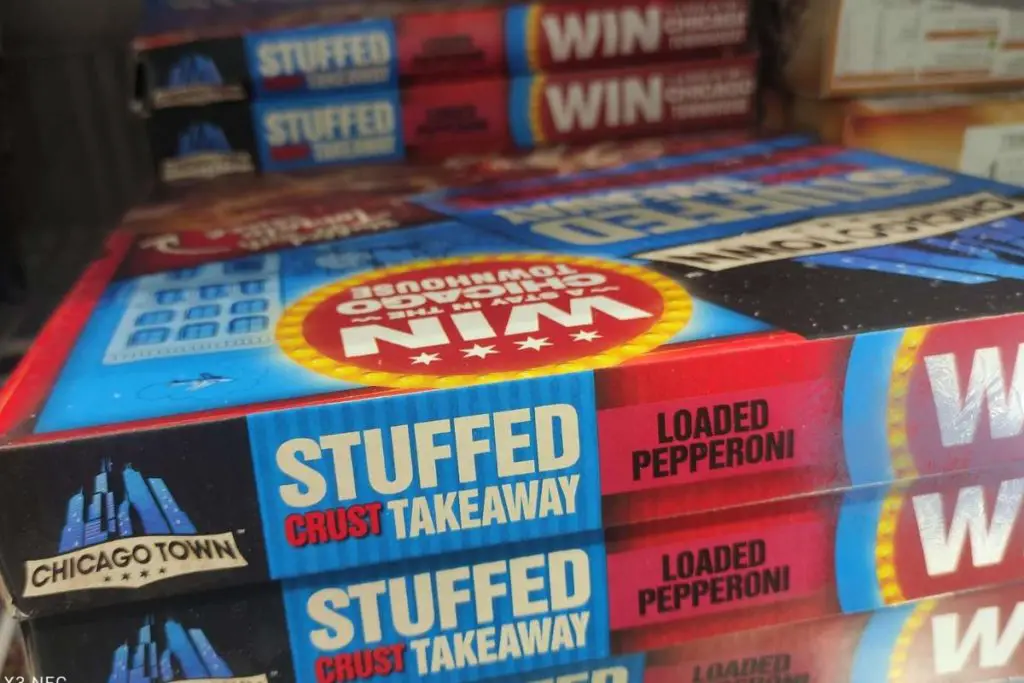
As a rule of thumb, Best Before dates are not deadlines you must follow to a T to avoid food poisoning or other malaise.
Instead of mandatory, they offer a guideline—a suggestion of when the producers estimate the food may start to lose certain qualities. It is not an exact science, merely a timestamp to help you determine when your food will remain at its peak quality. Subsequently, it is acceptable to exercise some common sense instead of throwing food out when the date changes.
The same rules do not apply to Used By or Expiration Date. Although freezing temperatures prevent bacteria from growing and multiplying, if you bought your pizza already frozen, the manufacturer has kept the freezing in mind when calculating the expiry date. If your product is past the expiration date, it should be not eaten and thrown away even if you may not see any obvious signs of spoilage.
But that said, if the pizza has not reached the Expiry Date yet, it does not guarantee that it is not spoiled and safe to eat unless it was kept under perfect storage conditions at all times.
How Long Does Frozen Pizza Last In The Freezer?
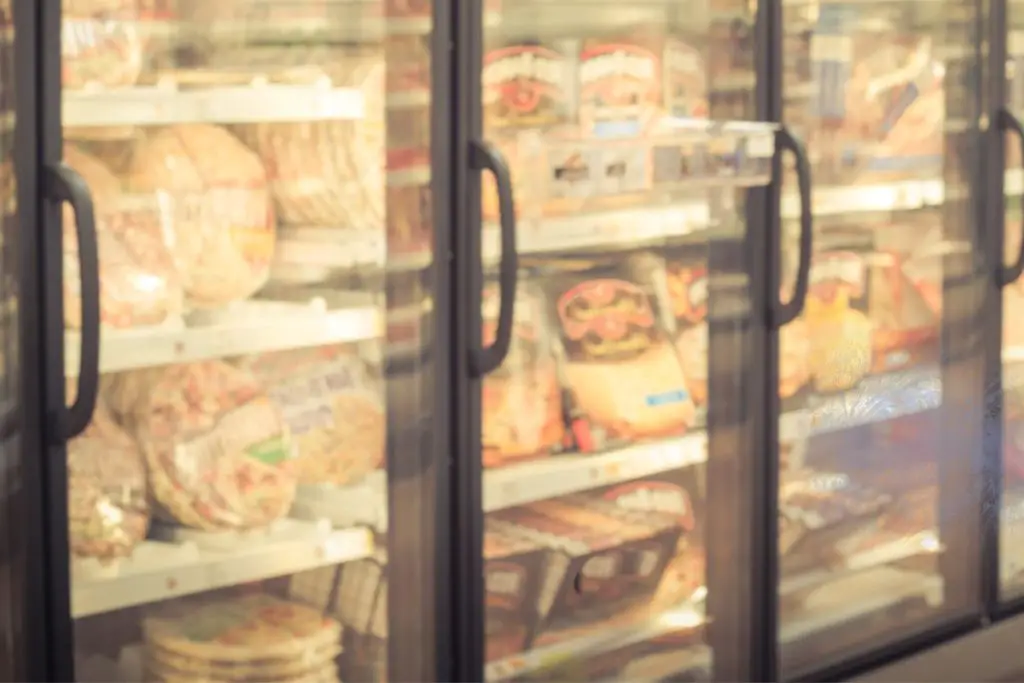
The duration of frozen pizza in the freezer depends on many factors. These estimates are affected by things like preparation methods, the storage temperatures, the ingredients list, and whether or not you’re freezing prepackaged frozen pizza or a fresh one.
Store-bought frozen pizza is designed from the get-go with extended shelf life in mind, so it can last for over a year in your freezer. In fact, under the perfect conditions, 12 to 18 months is the estimate before it starts to go bad, thanks to the preservatives and sealing methods like vacuum-sealing often used by the manufacturers [3].
Things change if you aim to store a fresh pizza, homemade or takeout. In such cases, your best bet would be to freeze it immediately after it cools down for best preservation.
However, odds are you’ll freeze leftovers that have been sitting out for a while, in which case they’ll still hold on to reasonable quality for one to two months in the freezer but the quality would start to deteriorate quite fast after that [4].
Read Also: Is It Safe To Eat Pizza Left Out Overnight In The Box?
How Do You Store Frozen Pizza Correctly?
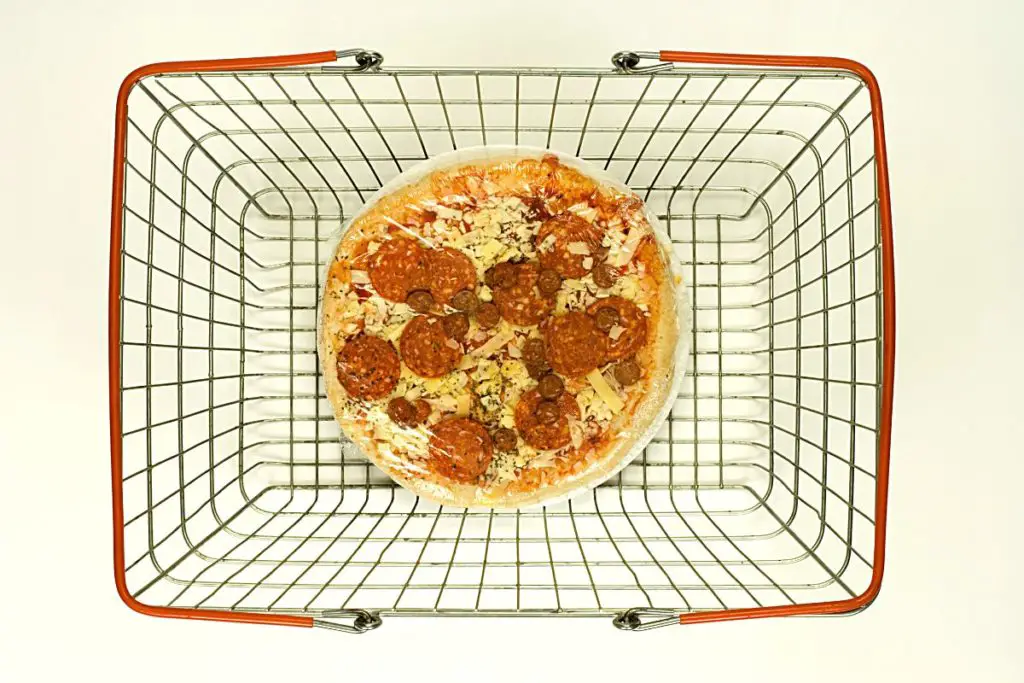
To ensure the best quality for an extended period, you have to focus on two things—the temperature of your freezer and the way the pizza is sealed.
1. Temperature
To reduce the risk of your frozen pizza spoiling too fast, make sure to keep its temperature stable from the moment you purchase it to the moment you store it in your freezer.
According to the U.S. Food and Drug Administration (FDA), the food needs to be stored in the freezer at 0°F (-18°C) to remain safe. The reason? It’s the ideal temperature to keep bacteria or mold from growing, even if it doesn’t kill them [5].
Contrastingly, if your frozen pizza is ever left outside at temperatures higher than 40°F (4.5°C) for over two hours, you can assume the cold chain is broken, so the food safety is already compromised.
2. Storage
To prevent freezer burns or any further degradation of the flavor and texture quality of your pizza, you should always ensure it is stored in a freezer-safe, airtight container.
Naturally, store-bought pizza already comes in perfect airtight or vacuum-sealed packaging designed to guarantee maximum freshness. As such, it’d be best to keep the pizza frozen without opening or damaging the package until you are ready to cook it.
Conclusion? Trust Your Instincts

Frozen pizza should look and smell just as fresh as regular pizza. Here is how to tell if frozen pizza is bad: if the coloring, smell, or texture seems off, odds are the cold chain has been compromised at some point, and you risk your health and well-being by eating it.
Some discoloration or unappetizing appearance might result from freeze burns. Although they are not a health risk, they are a clear sign that your frozen pizza will no longer be the delicious treat you expect.
However, if you follow the suggestions for proper frozen food care, your frozen pizza could be successfully frozen for months, up to a year, while maintaining its taste and texture.
Now, once you are ready to cook your frozen pizza, here is one of the best ways to do it: 4 Ways To Cook Frozen Pizza On The Grill And Get The Perfect Crust.
